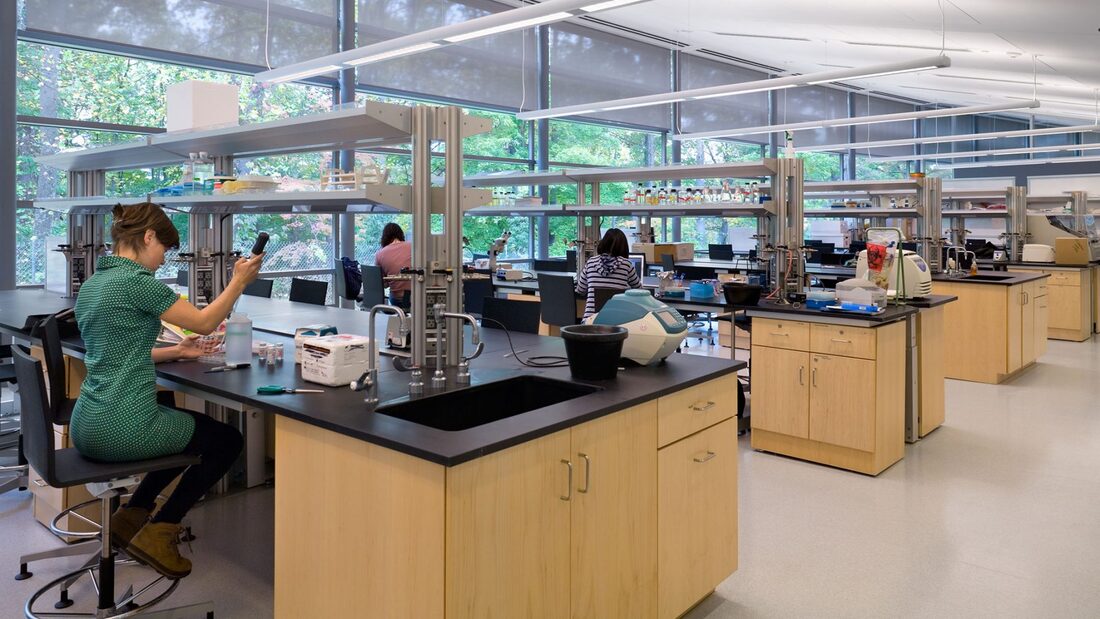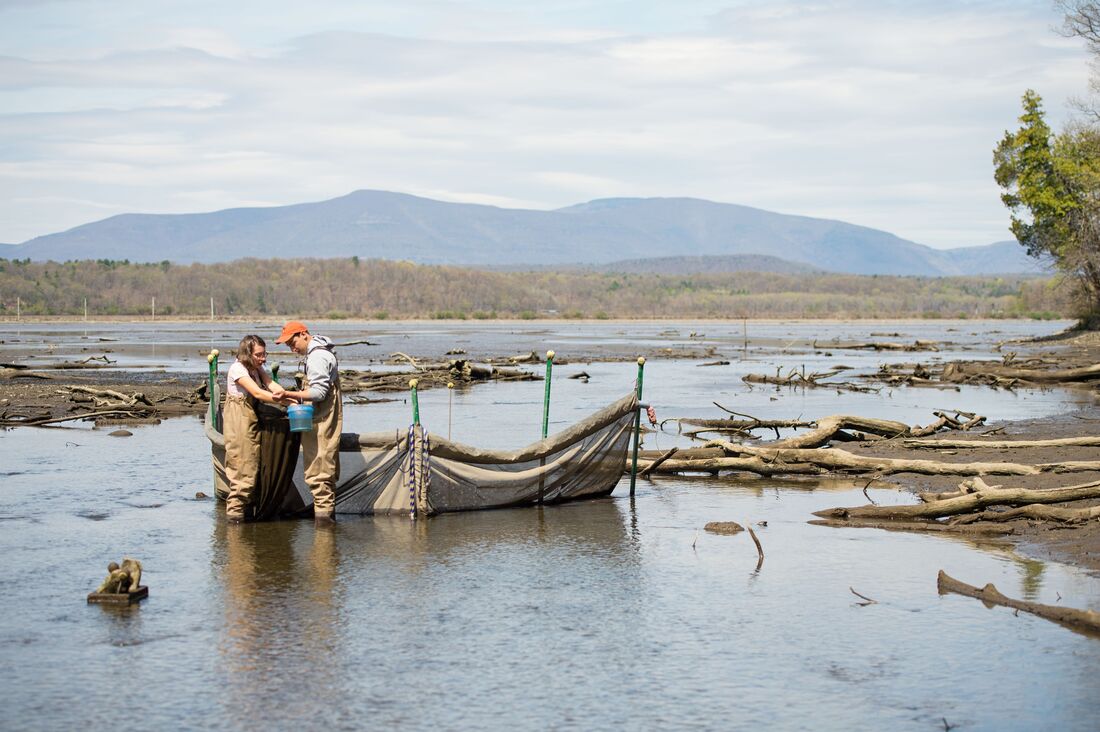Reem & Kayden Center for Science & Computation
The Reem and Kayden Center for Science and Computation opened in Fall 2007. This dramatic 42,000-square-foot building houses biology and computer laboratories as well as science lecture halls and classrooms. A chemistry wing opened in winter 2009.
The main floor of the Center houses three large, self-contained “smart” classrooms—their circular walls extending into the lobby—and an auditorium, capable of seating 65 people. Labs lining the entire western side of the building are framed by glass walls and overlook woods leading down a slope to Annandale Road, whose curves are paralleled by the science building’s fluid lines. The second floor features a suspended walkway. This level includes biology, computer science, and mathematics faculty offices, cantilevered above the lobby, with solid glass walls that echo those on the opposite side of the building. Bridges link the walkway to open spaces atop the three protruding classrooms. Students and faculty use these spaces for study sessions, computer work, and informal conversations. Such meeting places were designed to emphasize the close-knit quality of educational culture at Bard, providing areas for quiet study while simultaneously opening up opportunities for students to connect with other students and faculty.
The main floor of the Center houses three large, self-contained “smart” classrooms—their circular walls extending into the lobby—and an auditorium, capable of seating 65 people. Labs lining the entire western side of the building are framed by glass walls and overlook woods leading down a slope to Annandale Road, whose curves are paralleled by the science building’s fluid lines. The second floor features a suspended walkway. This level includes biology, computer science, and mathematics faculty offices, cantilevered above the lobby, with solid glass walls that echo those on the opposite side of the building. Bridges link the walkway to open spaces atop the three protruding classrooms. Students and faculty use these spaces for study sessions, computer work, and informal conversations. Such meeting places were designed to emphasize the close-knit quality of educational culture at Bard, providing areas for quiet study while simultaneously opening up opportunities for students to connect with other students and faculty.
Bard College Field Station
The Bard College Ecology Field Station was established by the college in 1972 and expanded in 1984 by the Hudson River National Estuarine Research Reserve (HRNERR) of the New York State Department of Environmental Conservation. The Field Station operates as a collaboration among Bard and Hudsonia Ltd.
The Field Station accommodates a variety of pure and applied research, education for professionals, and technical assistance in the environmental sciences and particularly field biology. Students, teachers, environmental professionals, landowners, concerned citizens, and others often need guidance through the maze of information and conflicting opinions regarding environmental issues and natural history. At the Field Station, diverse professionals, students, and amateurs work together to learn about the flora and fauna of the region and solve environmental problems that range from species identification to biodiversity conservation to sustainability. This work requires a particular marriage of natural history with theory, supported by long experience in the region and extensive knowledge of literature in the pertinent fields. Good land use planning and environmental management require a firm basis in field science as is provided by the Bard Field Station and its partners.
The Field Station accommodates a variety of pure and applied research, education for professionals, and technical assistance in the environmental sciences and particularly field biology. Students, teachers, environmental professionals, landowners, concerned citizens, and others often need guidance through the maze of information and conflicting opinions regarding environmental issues and natural history. At the Field Station, diverse professionals, students, and amateurs work together to learn about the flora and fauna of the region and solve environmental problems that range from species identification to biodiversity conservation to sustainability. This work requires a particular marriage of natural history with theory, supported by long experience in the region and extensive knowledge of literature in the pertinent fields. Good land use planning and environmental management require a firm basis in field science as is provided by the Bard Field Station and its partners.



